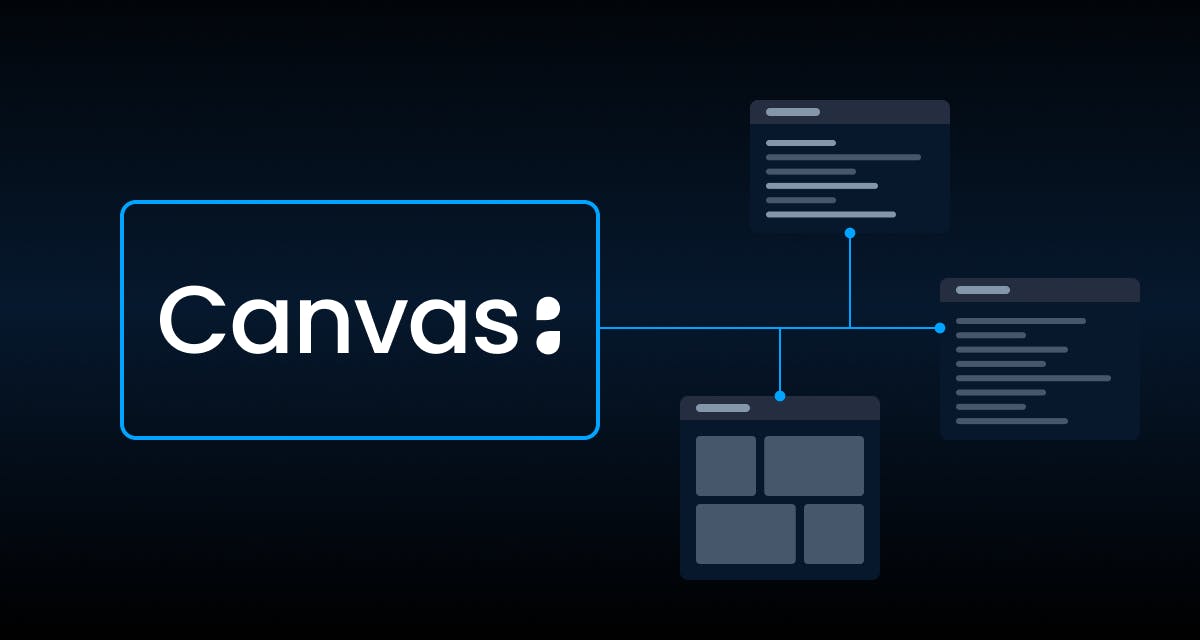EMR integration across healthcare IT systems is critical to ensure patient information is accurate, accessible, and shareable across providers. Connecting electronic medical records to other systems and data sources helps healthcare teams reduce errors, improve coordination, and save time.
With integrated systems, clinicians can see a complete medical history at the point of care. This leads to faster diagnoses, more personalized treatment plans, and fewer duplicate tests.
EMR integration also strengthens collaboration among providers by breaking down silos and ensuring everyone works with the same, up-to-date information.
As healthcare evolves, the adoption of EMR systems with built-in integration capabilities is becoming essential for improving efficiency, quality, and patient outcomes.
What EMR Integration Means for Healthcare Providers
Timely, informed, and personal patient care requires clinical teams to have access to up-to-date patient information. That information often lives in many disparate systems of record, across provider organizations, ancillary services, health systems, and information exchanges.
Connecting those systems so that data flows seamlessly into the source of truth, a clinician-facing Electronic Medical Record is a massive lever in improving provider efficiency and patient outcomes. Instead of isolated records, providers work with a complete and accurate patient history across every point of care.
For providers, this means:
- No more searching across multiple systems for patient records
- Fewer duplicate tests and reduced medical errors
- Access to the most current patient history at every visit
Integrated systems also cut administrative burdens. Staff spend less time re-entering data or chasing results and more time focused on patients.
At Canvas Medical, we have invested deeply in data integration via our SDK and FHIR API. This allows information to flow in and out of Canvas as part of a unified data architecture and delivers these advantages within a platform designed for control and customization. AI-powered automation and developer tools built into Canvas allow healthcare organizations to extend and customize workflows to their needs. The Deep Unified Architecture™ ensures that clinical and administrative features function cohesively without extra effort.
Integration of data into Canvas makes that information available to our SDK’s data module, which can then combine with events and effects using our SDK to power advanced capabilities, such as:
- Automated appointment reminders
- Streamlined billing and reimbursement processes
- AI-supported clinical decision support for faster, evidence-based care
With these tools, providers improve efficiency while keeping patient care personal and precise.
How EMR Data Integration Works in Medical Practice
EMR data integration relies on standardized protocols that allow different systems to share information reliably. The most common is FHIR (Fast Healthcare Interoperability Resources), which acts as a universal language for medical data. FHIR-compatible systems can exchange and use information with fewer translation issues, as it is a standard that is relatively widely adopted.
FHIR-based EMR integration process typically involves:
- APIs (Application Programming Interfaces): Connect systems, handle data requests, and deliver responses in formats each system understands.
- Data mapping and transformation: Align fields like names, dates, and test results so information displays correctly across platforms.
- Bidirectional flow: Updates in one system automatically sync to others, ensuring all providers have access to the most current patient data.
Security remains paramount in FHIR implementations. The FHIR standard leverages OAuth 2.0 for authorization and SMART on FHIR for granular access controls, ensuring users only access resources within their defined scopes. FHIR requires HTTPS/TLS encryption for all API communications, and its Provenance and AuditEvent resources track who accessed or modified data and when. These native FHIR security frameworks—combined with support for digital signatures and consent management through specific FHIR resources—maintain HIPAA compliance while protecting patient trust through standardized, interoperable security mechanisms.
For practices that need programmable control, Canvas provides both an SDK and an FHIR API. This gives developers the flexibility to build custom integrations, from connecting diagnostic tools to designing patient portals, while maintaining accuracy and security.
Essential EMR Integration Tools and Features
Getting the most out of EMR integration starts with understanding the key tools and features that enable smooth data exchange and practical use in daily care.
Connecting Electronic Medical Records with Other Healthcare Systems
Modern EMR platforms link with labs, imaging centers, pharmacies, and health information exchanges, handling everything from text-based lab results to complex medical images.
Canvas integration tools provide flexibility beyond simple data exchange. With agentic automation, open-source plugins, and a full SDK, healthcare organizations can create custom workflows that match their specific care models. Here is an example list of pre-built integrations that are included in the Canvas platform:
Hyperscribe
Clinical copilot for automated medical documentation and note-taking
Metriport HIE Comprehensive Patient Chart
Access comprehensive patient health records from health information exchanges
Bridge Integration for Telehealth Clinics
Seamless telehealth visit integration for virtual care delivery
Surescripts E-Prescribing Integration
Electronic prescribing and medication history access
Stripe Payments Integration
Payment processing for patient billing and transactions
Zoom Virtual Visit Telehealth Integration
Video conferencing for virtual patient appointments
Zus Aggregated Profile HIE Integration
Aggregated patient data from nationwide health information networks
Develop Health Prior Authorization Integration
Automated prior authorization workflows
Aptible Secure Hosting Integration
HIPAA-compliant infrastructure and hosting
Lob Secure Mail Integration
Automated physical mail and document delivery
Health Gorilla Bidirectional Lab Integration
Lab ordering and results integration
Healthwise Education Content Integration
Patient education materials and health content
DrFirst EPCS Pharmacy Integration
Controlled substance e-prescribing and pharmacy connectivity
Twilio SMS Text Messaging Integration
Patient communication via SMS text messaging
Google Calendar Integration
Appointment scheduling and calendar synchronization
SendGrid Email Integration
Automated email communications and notifications
Claim.MD Insurance Clearinghouse Integration
Claims submission and insurance eligibility verification
Practical integrations include automatic lab result filing, e-prescribing, and regional data sharing. Each connection reduces manual entry and lowers the risk of transcription errors.
Patient Portals and Access to Medical Records
Patient portals have become central to modern care delivery. They provide patients with secure access to their medical records, including visit summaries, lab results, imaging reports, and medication lists.
Key capabilities include:
- Secure messaging with providers
- Pre-visit form completion
- Condition-specific educational resources
- Integration with wearables and home monitoring devices
Seamless integration ensures that updates made by providers appear in the portal quickly, while patient-submitted data flows back into the EMR for review. This two-way connection builds transparency, strengthens engagement, and supports more personalized care.
Protecting Sensitive Patient Data in EMR Integration
Safeguarding patient information is essential for both regulatory compliance and patient trust. Every integration point must be secured to prevent unauthorized access.
- Encryption: Strong encryption protects data in transit and at rest, preventing unauthorized access even if systems are compromised. This ensures that electronic protected health information (ePHI) remains unreadable and non-actionable. Modern EMRs use multiple layers of encryption for defense in depth.
- Access Controls: Role-based permissions ensure staff only see information relevant to their role. This minimizes both accidental and intentional misuse of records.
- Audit Trails: Systems log every access and modification of patient data. Regular reviews of these logs help detect unusual activity and support compliance audits.
- Ongoing Updates: Continuous security patches and assessments address new threats. Clear update procedures keep protections current across all integrated systems.
The HIPAA Security Rule requires these safeguards as part of a comprehensive security strategy. Technical, physical, and administrative controls work together to protect ePHI. Compliance is mandatory, and violations can result in significant penalties and loss of patient trust.
Challenges Healthcare Organizations Face with EMR Integration
While EMR integration offers significant advantages, healthcare organizations must also address real challenges that can slow or complicate adoption.
Data Sharing Between EMR Systems
- Fragmentation: Different EMR vendors often use proprietary data formats, storage methods, and workflows. Even when standards like FHIR exist, vendors may interpret them differently, creating compatibility issues that require careful mapping and translation.
- Legacy Systems: Many organizations still rely on older EMRs that lack APIs or use outdated formats. Connecting these systems often requires custom interfaces or middleware that increase cost and complexity.
- Organizational Barriers: Separate departments within the same hospital may use incompatible systems. Aligning stakeholders on standardized processes and data definitions demands strong coordination and effective change management.
- Volume and Variety of Data: A single patient encounter can generate structured data (vitals, labs), unstructured notes, and large imaging files. Integration platforms must handle this variety while preserving speed and reliability.
Ensuring Accuracy in Electronic Health Records
- Data Transfer Errors: Each point of exchange creates potential for errors, from formatting issues to mismatched patient identifiers. Strong validation processes are essential to catch and correct mistakes before they impact care.
- Duplicate Records: Patients often generate separate records at different facilities. Sophisticated matching algorithms must identify duplicates despite differences in demographics such as name spelling or address formats.
- Clinical Data Consistency: Lab values may use different units, medication data must be mapped precisely, and allergy information must remain coded consistently to trigger safety alerts. Each area requires careful setup and continuous monitoring.
How Canvas Reduces Integration Challenges
Canvas helps organizations overcome many of these hurdles through:
- A unified data architecture that enforces consistency across clinical, financial, and operational modules.
- Built-in validation rules that maintain accuracy as information flows between internal modules and external systems.
- Flexible integration capabilities that support both modern FHIR APIs and custom connections where needed.
Advancing Care Through EMR Integration
EMR integration is no longer optional for practices aiming to deliver connected, patient-centered care. By linking systems, providers gain faster access to complete medical records, reduce the risk of errors, and strengthen communication across care teams. These efficiencies translate into safer decisions, stronger outcomes, and higher patient satisfaction.
Addressing challenges such as interoperability and data accuracy requires the right strategy, supported by secure and scalable tools.
Organizations that commit to effective integration not only streamline daily operations but also prepare themselves for long-term success as healthcare continues to evolve.
Canvas was designed for this future. With AI-driven automation, SDK and FHIR API support, and adoption by leading practices, Canvas empowers healthcare teams to extend and customize workflows with confidence.
Contact Canvas today to explore options for advancing care through reliable EMR integration.
Frequently Asked Questions (FAQs):
What is EMR integration?
EMR integration connects Electronic Medical Records with other healthcare systems to allow smooth data exchange. It ensures providers can access patient information from different platforms in one place. This reduces duplication of work and minimizes errors. The goal is to create a unified and accurate patient record.
Why is EMR integration important?
It improves efficiency by reducing manual data entry and redundant testing. Providers gain a complete view of patient history, which supports better decision-making. Integration also enhances communication across care teams. Ultimately, it leads to safer, more coordinated patient care.
How does EMR integration work?
It uses standards like FHIR and HL7 to make systems “speak” the same language. APIs and middleware act as bridges between platforms. Data is encrypted and transferred securely to maintain compliance. The result is real-time, accurate information sharing.
What are the challenges of EMR integration?
Different vendors often use incompatible formats, creating interoperability issues. Legacy systems may lack APIs or modern standards, complicating integration. Data accuracy and patient matching can also be difficult. Strong security measures are needed to protect sensitive information.

